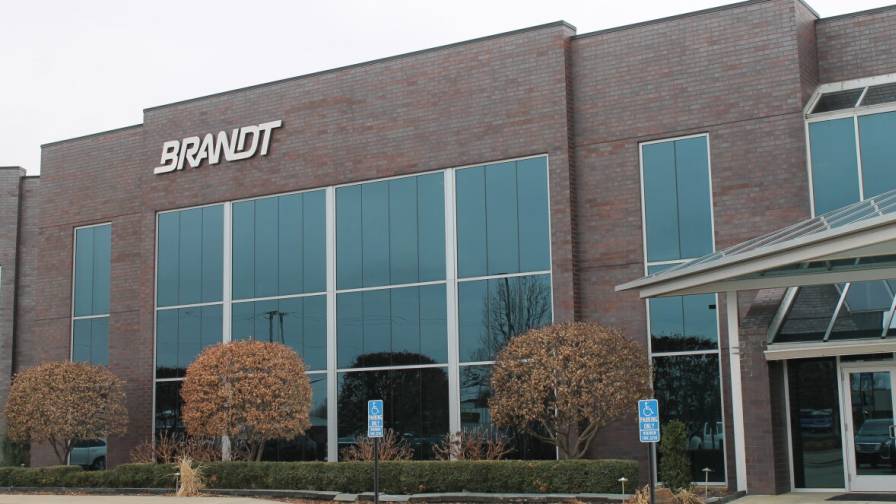The Ag Retailer of the Future: A Roadmap for Success Starts With Technology

The final sessions of the first annual PACE Executive Forum looked towards the future. Today’s business of agriculture is operating within an ever-evolving ecosystem with numerous forces challenging traditional business models and practices. To survive and thrive in this environment, ag retailers must be more responsible and adaptive than they ever have before, to cater the needs of existing and new grower-customers.
The session kicked off with a keynote address from Doug Grott, Director of Digital Technology for Wilbur-Ellis Co. Right up front, Grott told PACE Executive Forum attendees get ready to think about new ideas. “Some of the things I’m going to share with you will be challenging to what you’ve known before,” Grott said. “Many of you will probably be scratching your heads.”
One notion he advised attendees to reconsider was their practice of providing services at no cost to grower-customers, particularly technology. “Retailers have to start monetizing ag tech offerings,” Grott said. “We can’t continue giving these away for free.”
Overall, Grott pointed to two factors that will alter how ag retailers work with their grower-customers in the upcoming years. The first involved data points. As Grott pointed out, ag retailers and growers have been collecting massive amounts of data regarding their crop fields for several years now. But today’s numbers pale in comparison with what’s to come.
“Right now, it is estimated that growers collect about 50,000 data points from their fields each year, Grott said. “But by 2035, this figure will have grown to more than 5 million data points! Learning how to not only collect but manage all of these data points will be very important.”
The other factor that will change how ag retailers and growers interact is the emergence of Generation Z into the mix. These individuals, born between 1997 and 2012, are rapidly becoming a key part of the nation’s overall population. And as Grott pointed out, their way of doing things is significantly different than their fathers before them. For one thing, Generation Zers don’t do interpersonal communications.
“According to the most recent Purdue University Large Grower Survey, 85% of Generation Zers want to have a digital relationship with their ag retailers,” he said. “If that doesn’t make the hair on the back of your neck stand up, it should.”
The Need for Technology
As Generation Z becomes a bigger part of the overall agricultural industry, Ben Craker, Portfolio Manager for AgGateway, thought that the current learning curve between products and data would need to shrink. “If you look at the adoption curve for technology use on the farm, it looks like a hockey stick, and that makes sense,” Craker said. “These systems make everyone’s life easier. But there is a difference between systems and data. With systems, the growers can just bolt that thing onto their equipment, and they are ready to go. But with data management, things are slower. Up until now, we’ve asked customers to jump through plenty of educational hoops to make data work for them. That has to change.”
Kevin Krieg, Director of Product Marketing for Intelinair, agreed. “The next generation of agriculture is looking to bring all kinds of technology back to the farm,” Krieg said. “But these users don’t want to spend a lot of time figuring this out. We like to say they work in micromoments. To appeal to these users, we as an industry have to clear away all the noise when it comes to data management.”
Wrapping up the session, Aissa Good, Managing Director for the Center for Food and Agricultural Business at Purdue University, reminded attendees to think about all of topics that had been discussed during the 2022 PACE Executive Forum. “We’ve talked about a lot, but at the end of the day, it comes down to what all of you can take home from this back to your companies,” Good said. “It will be important to take some small bites of the things we’ve discussed that you can implement.”
In conclusion, Alexander Reichert, Co-Founder and CEO at AgVend, pointed out to attendees that something ag retailers have historically done already will help in any future efforts – being trusted partners to their grower-customers. “By our nature, we provide solutions, and use retailers to get information and technology to the growers,” Reichert said.
Craig Jorgensen, National Accounts Manager for Application Equipment at AGCO Corp., concurred. “You should keep trying to maintain a strong relationship with your customers any way that you can,” Jorgensen. “And even if some of the variables change, I don’t see the importance of these kinds of trusted partnerships changing much down the road.”






